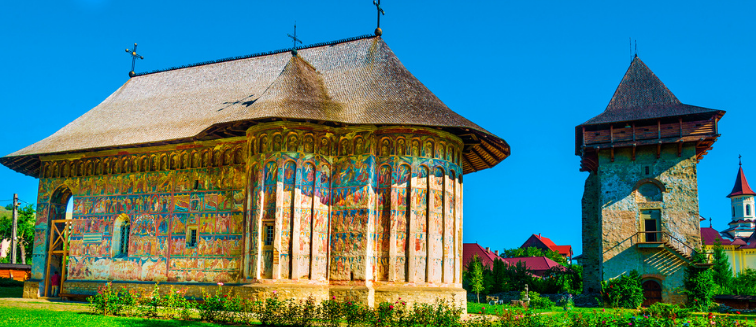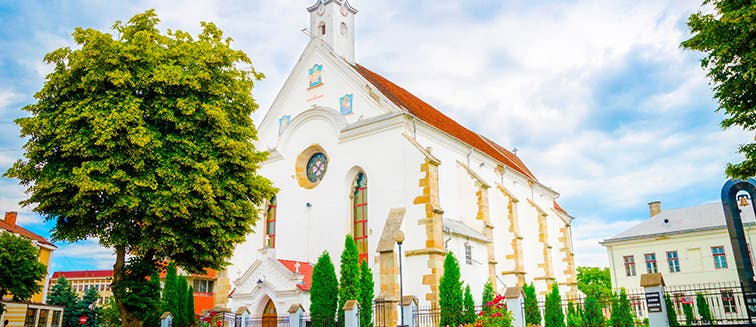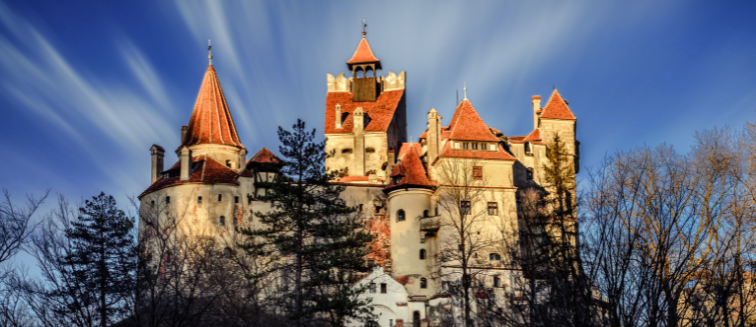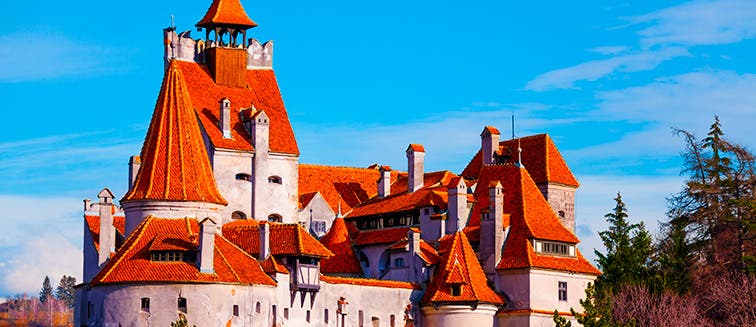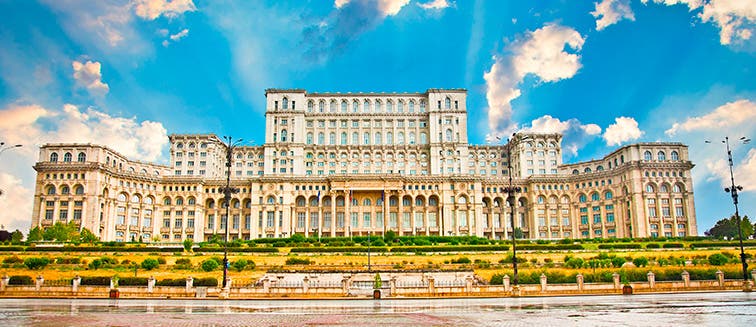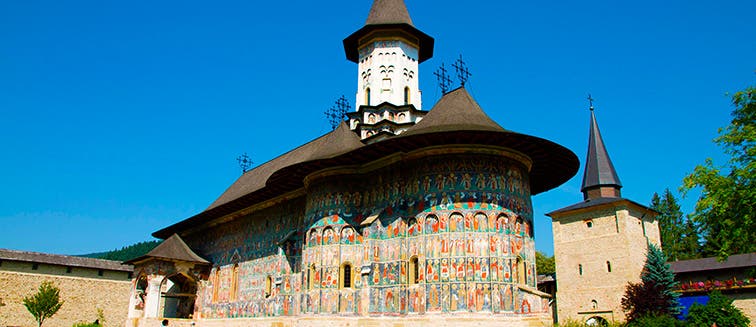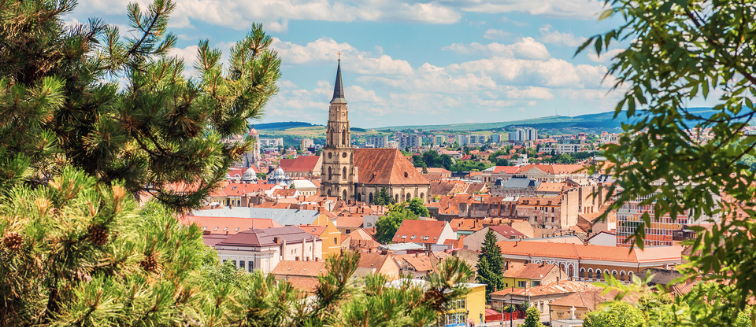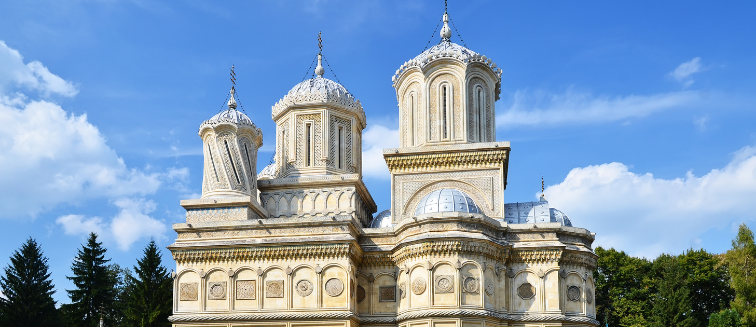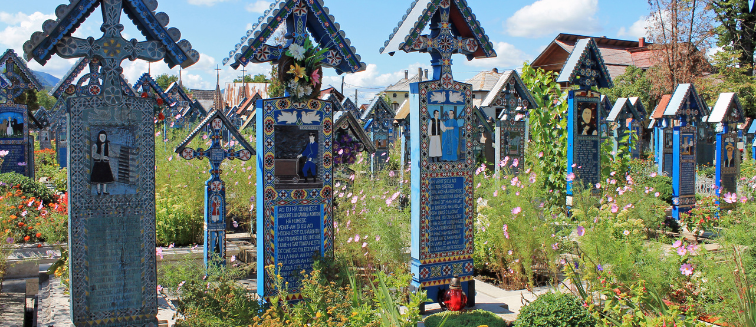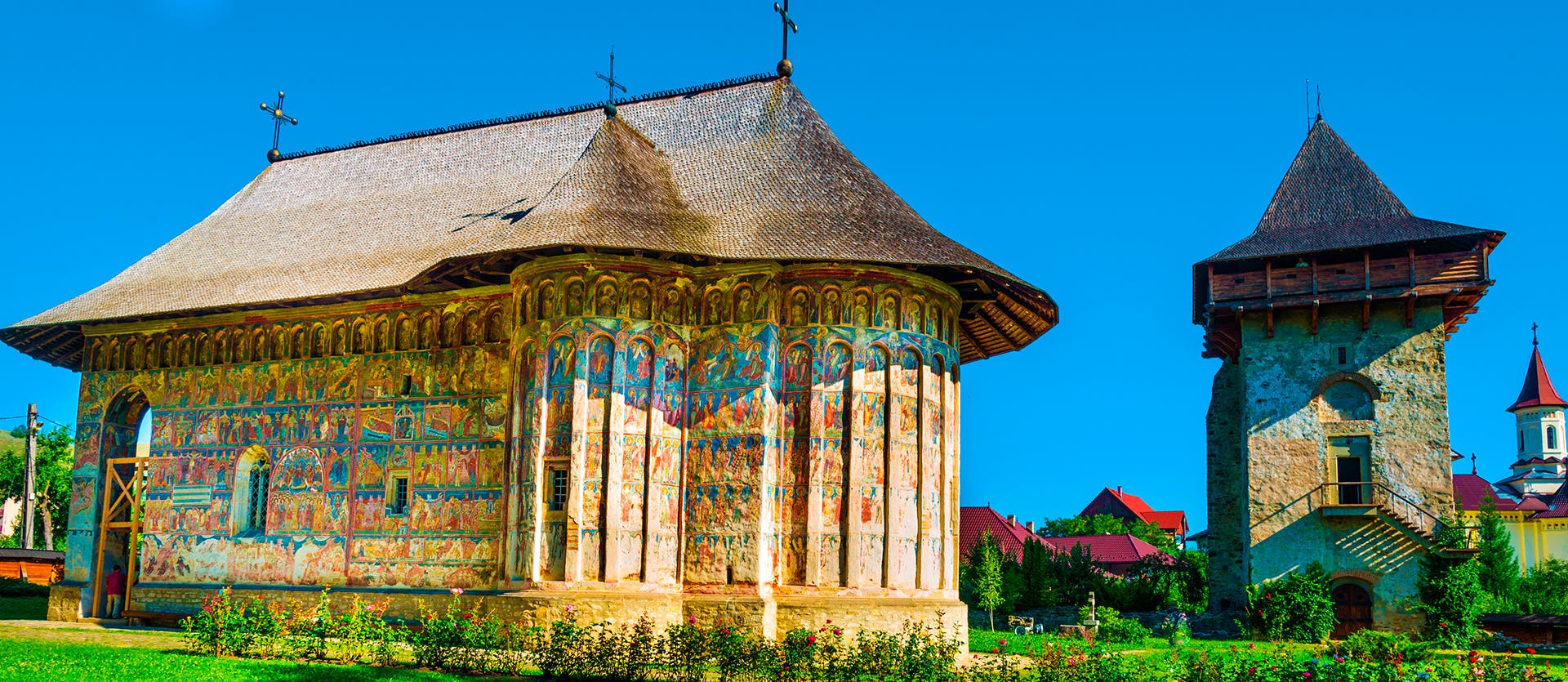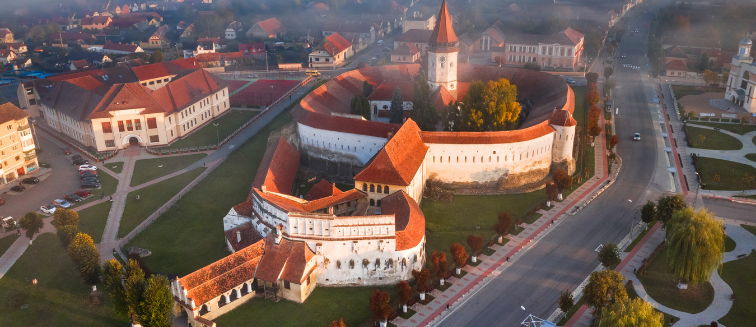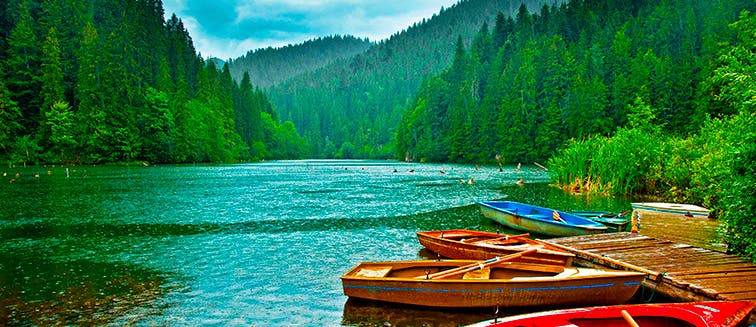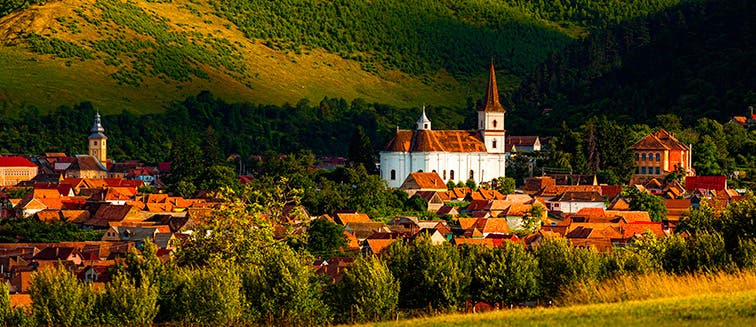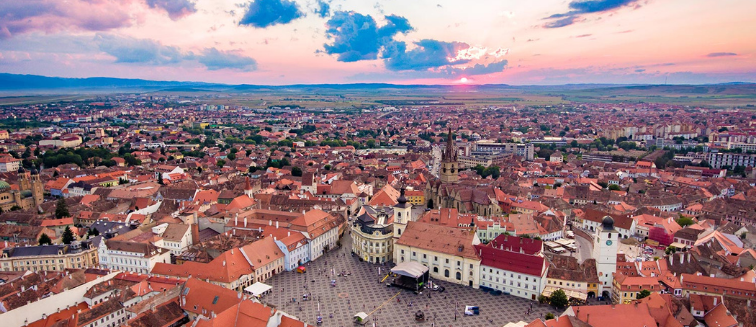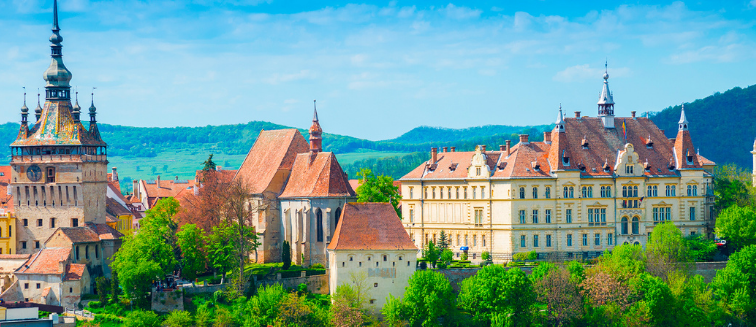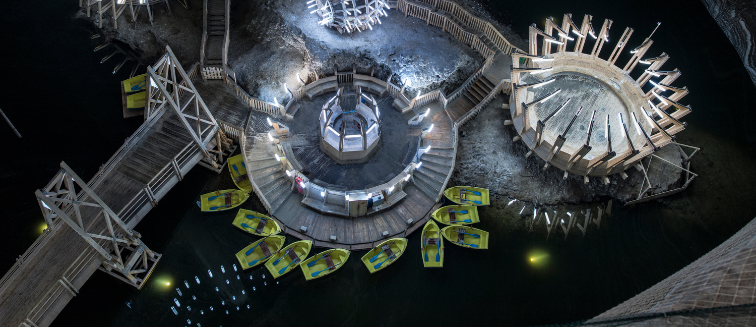Africa
Americas
Asia
Europe
Oceania
By Season
By Interest
By Group
What to see in Romania
Bucovina
Tourist attractions Bucovina
A historical region of Romania, Bucovina represents rural Romania at its most captivating. Situated in the northeast of the country, Bucovina roughly corresponds to the modern-day territory of Suceava County. Tiny mountainside villages, painted monasteries, wildflowers, rolling hills and a rich folkloric heritage means that Bucovina rivals Transylvania in terms of cultural importance.
Visiting Bucovina gives you the chance to completely disconnect from the stresses of modern life, offering a peaceful retreat into Romanian folk culture and the immaculate landscapes of mountains, beech forests and farmlands.Bucovina is well-known for its folk arts and religious heritage. Take the brightly coloured monasteries of Voronet and Zamca for example, or the traditional painted eggs, still hand-crafted today and one of the best souvenirs to remember your trip to Bucovina by.
As well as traditional folklore, if you travel to Bucovina you’ll encounter a mix of cultural influences, including Ukrainian, Russian and Polish communities. A trip to Bucovina is the chance to experience all the traditional charms of the Romania of your imagination: horseriding villagers, wooden houses, traditional dress and artisan folk crafts.
Things to see in Bucovina
If you take a tour of Bucovina, you’ll want to see the famous painted churches and monasteries that have helped to propel this historic region onto the bucket lists of all intrepid travellers. These one-of-a-kind religious sites are a must-see and a highlight of any Bucovina trip. Dating from the 15th and 16th-century, the Eight Painted Churches of Bucovina are a protected UNESCO World Heritage Site, found within the villages of Voronet, Humor, Sucevita, Moldovita, Arbore, Probota and Patrauti and surrounded by fortified walls.
Each of the painted churches has a dominant colour. For example, Voronet Monastery, founded in 1487, is the most famous of the eight and known for its bright blue facade. Like all of the painted churches, the walls of Voronet Monastery is adorned with ornate frescoes depicting several religious themes. Nicknamed the ‘Sistine Chapel of the East’, if you only visit one of the painted churches on a trip to Bucovina, make sure it’s Voronet Monastery! Other painted churches to visit in Bucovina include the Church of the Resurrection in Sucevita, and the Church of the Holy Cross in Patrauti, the oldest of all the painted churches. The best things to see in Bucovina, the prominence of these historic buildings pay testament to the importance of the church in medieval Romania.
If you travel to Bucovina, you’ll likely base your exploration in Suceava, the best starting point for a tour of the painted churches and idyllic villages of the region. Once the capital of the region of Moldova, here you can visit the restored Moldova Fortress, dating from the 14th-century, explore the historic Monastery of St. John the New and learn more about the region at the Bucovina History Museum, one of the best things to do in Bucovina if you want to understand more about the local history.
Once you’ve visited the enchanting painted churches and explored the traditional villages, why not get out and discover the immense natural beauty of Bucovina in the regions national parks. Bucovina is home to two national parks: Calimani National Park and Rodnei National Park. Here you can get lost amongst the wilderness of northern Romania and hike past glacial lakes and the soaring Carpathian Mountains, covered in emerald beech trees.
OUR BEST TRIPS TO BUCOVINA
YOU ALSO LIKE
Romania
2 Trips
Russia
Notify me when available
Ukraine
Notify me when available
Spain
5 Trips
Italy
10 Trips
Portugal
6 Trips
Poland
Notify me when available
France
5 Trips
Iceland
5 Trips
United Kingdom
Notify me when available
Germany
3 Trips
Czech Republic
2 Trips
Hungary
2 Trips
Belgium
4 Trips
Scotland
Notify me when available
Austria
3 Trips
Greece
7 Trips
Holland
4 Trips
Ireland
1 Trips
Croatia
3 Trips
Baltic States
3 Trips
Norway
9 Trips
Finland
2 Trips
Denmark
1 Trips
Switzerland
3 Trips
Slovenia
Notify me when available
Sweden
2 Trips
Slovakia
1 Trips
Faroe Islands
Notify me when available
Montenegro
1 Trips
England
Notify me when available
Liechtenstein
Notify me when available
Northern Ireland
Notify me when available
Cyprus
1 Trips
Albania
2 Trips
North Macedonia
Notify me when available
Tourist attractions romania
Points of interests
- Trips to Bistrita
- Trips to Bran & Bran's Castle
- Trips to Brasov
- Trips to Bucharest
- Trips to Bucovina
- Trips to Campulung Moldovenesc
- Trips to Carpathian Mountains
- Trips to Cluj Napoca
- Trips to Curtea de Arges
- Trips to Merry Cemetery
- Trips to Moldavia
- Trips to Peles Castle
- Trips to Prejmer
- Trips to Red Lake
- Trips to Sibiel
- Trips to Sibiu
- Trips to Sighisoara
- Trips to Sinaia
- Trips to Sinaia Monastery
- Trips to Transylvania
- Trips to Turda Salt Mine
Other Points of interests
- Trips to Belovezhskaya Pushcha National Park
- Trips to Brest
- Trips to Chernobyl
- Trips to Goritsy
- Trips to Hermitage Museum
- Trips to Historical castles of Mir and Nezvizh
- Trips to Kiev
- Trips to Kizhi
- Trips to Kremlin
- Trips to Mandrogi
- Trips to Minsk
- Trips to Moscow
- Trips to Moscow Metro Stations
- Trips to Saint Petersburg
- Trips to Uglich
Countries Nearby
- Albania Trips
- Austria Trips
- Baltic States Trips
- Belgium Trips
- Croatia Trips
- Cyprus Trips
- Czech Republic Trips
- Denmark Trips
- England Trips
- Faroe Islands Trips
- Finland Trips
- France Trips
- Germany Trips
- Greece Trips
- Holland Trips
- Hungary Trips
- Iceland Trips
- Ireland Trips
- Italy Trips
- Liechtenstein Trips
- Montenegro Trips
- North Macedonia Trips
- Northern Ireland Trips
- Norway Trips
- Poland Trips
- Portugal Trips
- Romania Trips
- Russia Trips
- Scotland Trips
- Slovakia Trips
- Slovenia Trips
- Spain Trips
- Sweden Trips
- Switzerland Trips
- Ukraine Trips
- United Kingdom Trips
Trip Styles
- Greece Nature Tour Packages Trips
- Family Greece Trips
- Greece Tours for Couples Trips
- Iceland Nature Holiday Packages Trips
- Family Italy Trips
- Italy Tours for Couples Trips
- Epic Italy Nature Packages Trips
- Norway Nature Holiday Deals Trips
- Norway Couples Getaways Trips
- Portugal Nature Holiday Packages Trips
- Portugal Tours for Couples Trips
- Spain Nature Holiday Packages Trips
- Spain Tours for Couples with Exoticca Trips
- Switzerland Nature Tour Trips
- Switzerland Couples Tours Trips
Subscribe to our newsletter and join Exoticca GO
The best travel deals
Exclusive promotions
Expert travel tips
